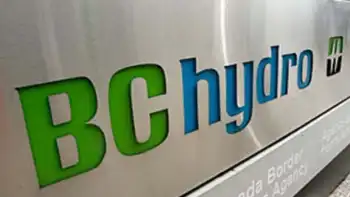Green schools program money well spent
By Toronto Star
NFPA 70b Training - Electrical Maintenance
Our customized live online or in‑person group training can be delivered to your staff at your location.

- Live Online
- 12 hours Instructor-led
- Group Training Available
There are more than two dozen Ontario clean technology ventures participating in the program, which is being jointly spearheaded by the Ministry of Education and Ministry of Research and Innovation.
Oakville-based Fifth Light, which has a technology that reduces the electricity consumption of fluorescent lighting systems, is retrofitting eight schools.
Triacta Power Technologies of Ottawa is installing its smart meters in more than two-dozen schools. REGEN Energy and EnviroTower, both from Toronto, are also putting their energy-reducing products into schools.
On the renewable energy side, Ancaster-based Cleanfield Energy is installing its vertical axis wind turbines which kind of look like egg beaters on the rooftops of at least nine schools. A number of solar projects are also in the works, based on home grown products from Arise Technologies, Menova Engineering and Conserval Engineering.
I say the $20 million is well spent because these projects are designed to demonstrate Ontario-based technologies that lack a solid track record of deployment. Without that track record, itÂ’s tough for these companies to go out into the global marketplace and convince others to take a chance on their products.
But not every dollar devoted to “greening” our schools need be given away. Last April, for example, the McGuinty government earmarked $550 million for energy-reducing “renovations and retrofits” of schools.
A month later another $50 million was announced for renewable energy projects – solar, geothermal, micro-wind and other clean energy systems that generate electricity, heating or cooling.
I applauded the financial commitment at the time, and to an extent still do, but looking back I wonder whether just throwing the money at schools was the right approach during a time when provincial budgets are under intense stress.
ItÂ’s well established that energy-efficiency retrofits offer the biggest emissions-reduction bang for the scarce public buck. Energy savings of between 15 per cent and 30 per cent can be achieved with proven and widely available technologies.
Sure, such retrofits can cost a lot up front, but compared to solar or geothermal, the payback is often less than two years – as opposed to a decade or longer.
That being the case, why not just loan the money to schools and other public institutions, and then have these institutions pay back that loan – and maybe 2 or 3 per cent interest – from the energy savings that result?
What you end up with is a revolving fund, which is essentially the gift that keeps on giving. ItÂ’s an approach that Julia Langer, executive director of the Toronto Atmospheric Fund, is urging the government to embrace in a big way.
“Many measures pay back within months and can be blended with retrofits with longer paybacks for a reasonable return on investment,” Langer says.
She has proposed that the Ontario government create, to start, a $250-million low-interest revolving loan fund aimed at helping municipal governments, academic institutions, schools and hospitals – collectively known as the MASH sector—dig deep into energy efficiency.
By “deep” I mean beyond light bulbs. Some fruit hangs lower than others. Rather than cheap out by buying the short ladder, Langer wants us to spend a bit more on a longer ladder that gives us more reach but much bigger savings over time.
We know that the MASH sector represents roughly 10 per cent of OntarioÂ’s greenhouse gas emissions. We also know that their energy costs are high. School boards alone spent nearly half a billion dollars on their utility bills in 2009.
Langer figures that a $250 million fund can finance 75 or more retrofit projects over two years, and that over 10 years the fundÂ’s total investment will be triple its original value.
Now, there are many different ways to finance this. Infrastructure Ontario can raise money by issuing green bonds. The Ministry of Finance can simply earmark funds in the budget. Or, the government can provide loan guarantees as a way to get the banks directly involved. A combination of the above is also an option.
Of course, this requires that government think creatively and take on more responsibility – not to mention the potential pitfalls that come with it. Nobody wants to see another e-health scandal or Ontario Lottery and Gaming Corp., and that’s a risk whenever government creates a structure to manage large sums of money.
ItÂ’s easier and more hassle-free to just spend the money in one shot. Unfortunately, itÂ’s an approach and mindset that prevents us from doing more with less.
A $250-million revolving fund? Heck, I say go for $1 billion.











